Impact sustainability by design was probably one of my favourite classes in sustainability marketing this semester, not only because was it super engaging, but it inspired me to look into this subject in depth and made me consider to pursue a career in this field. As I was browsing the internet, I found this website called Treehugger, which is a sustainability website covering a great variety of topics relating to sustainability. I found an article about his super cool architecture called Snøhetta ZEB pilot house, which was built in Norway in 2014.
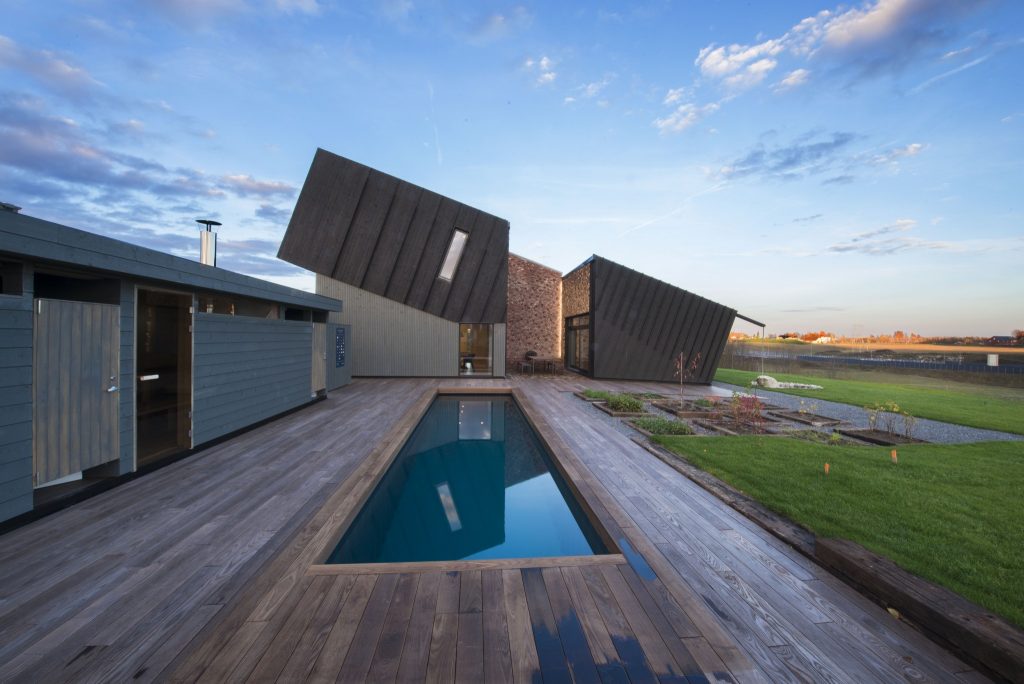
In class, we talked about what sustainable design means, which is the intention to reduce or completely eliminate negative environmental impacts through thoughtful design. Furthermore, we also talked about how the Living Building Challenge is the world’s most rigorous proven standard for buildings; in fact, the ZEB house was built to the most stringent energy standard in the world, which is even sticker than the Living Building Challenge. To achieve the ZEB-OM classification, projects must document and verify a minimum of 100% CO2 emission offsetting. Yes, you saw it correctly, it is 100% CO2 emission offsetting, which in this case means the house not only has to produce more energy than it uses, but it also has to repay the debt of all the energy it took to build, and that is embodied in the materials it is made of, amortized over the life span of the house. The photo below shows how smart and sustainable the house is.
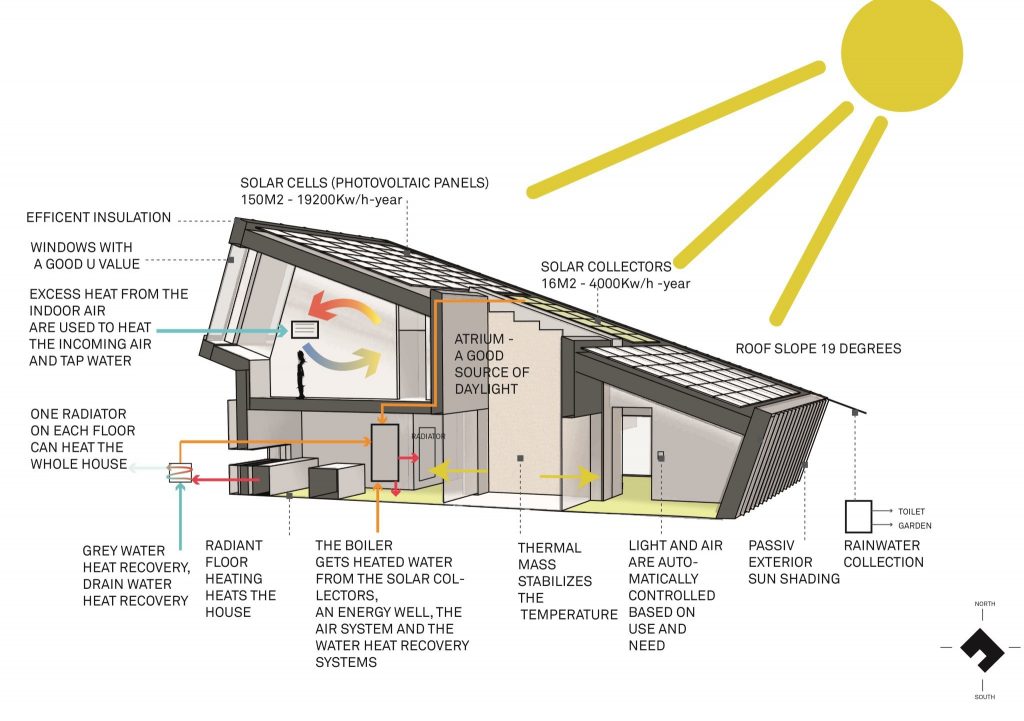
 The glass wall design allows natural daylight to shine in thereby reducing electricity consumption. All the energy is generated by renewable or green energy resources built into the house and heating and cooling of the house are solved passively through the placement of glass surfaces, orientation, house geometry, and volume. Moreover, materials used to build the house was based on thermal characteristics and embodied energy, but also on the basis of their ability to contribute to a good indoor climate, air quality, and aesthetic qualities.
The glass wall design allows natural daylight to shine in thereby reducing electricity consumption. All the energy is generated by renewable or green energy resources built into the house and heating and cooling of the house are solved passively through the placement of glass surfaces, orientation, house geometry, and volume. Moreover, materials used to build the house was based on thermal characteristics and embodied energy, but also on the basis of their ability to contribute to a good indoor climate, air quality, and aesthetic qualities.
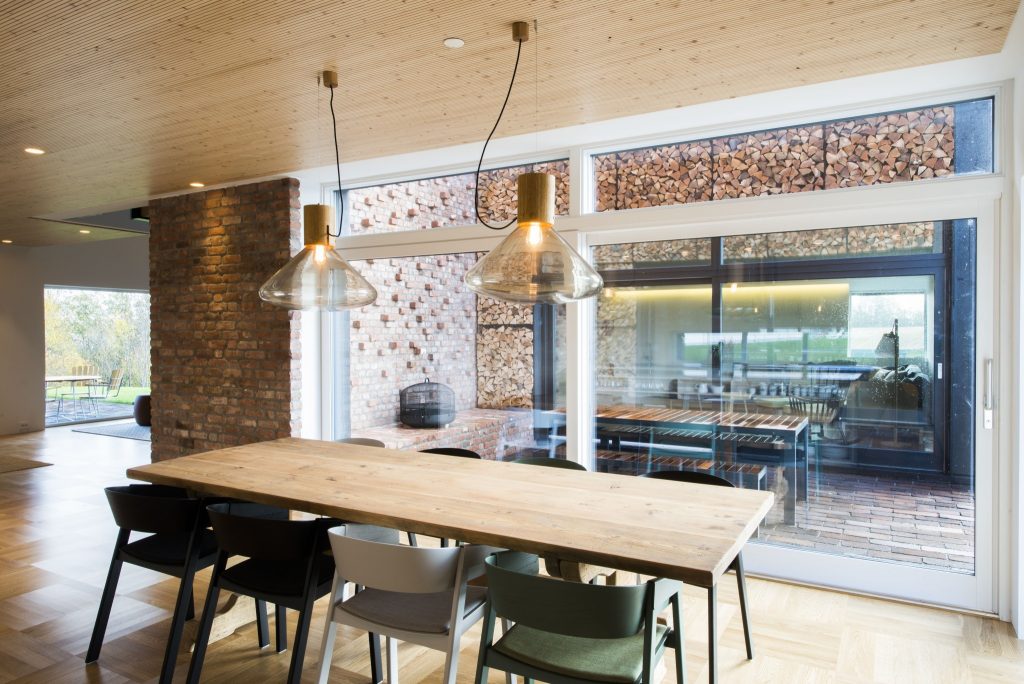 One concept that stands out in terms of sustainability was the goal of this house: zero emission buildings should not be sustainable only at one point in time, it must achieve a balanced carbon footprint throughout the course of their whole existence, which includes construction, operations, and demolition.
One concept that stands out in terms of sustainability was the goal of this house: zero emission buildings should not be sustainable only at one point in time, it must achieve a balanced carbon footprint throughout the course of their whole existence, which includes construction, operations, and demolition.
Here are more pictures of this beautiful house, and hopefully one day I could be lucky enough to have the opportunity to visit this piece of art.
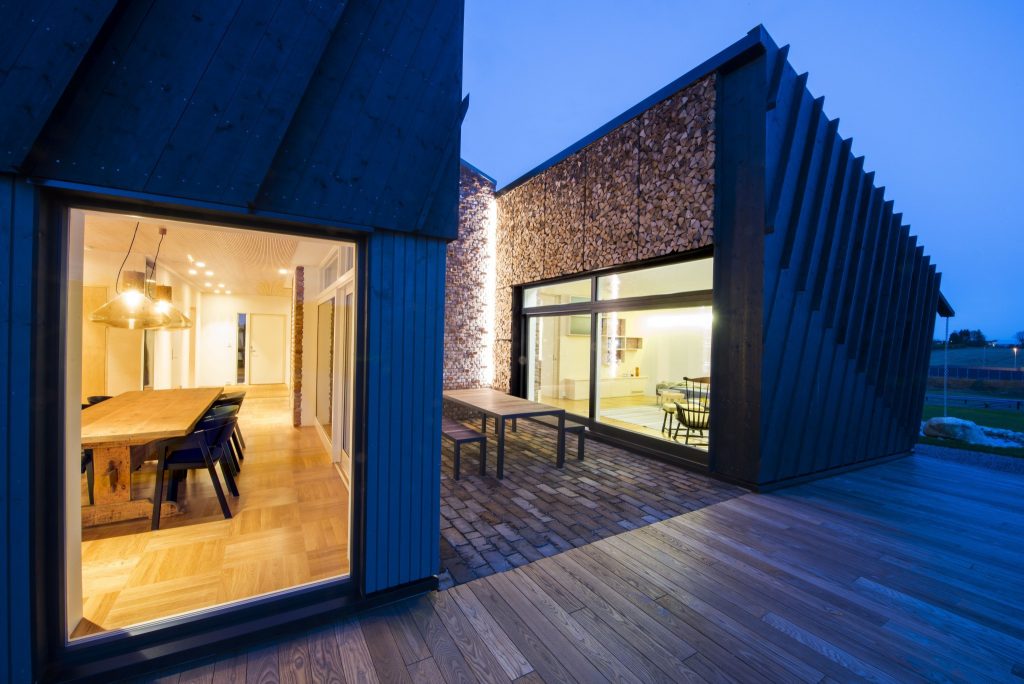
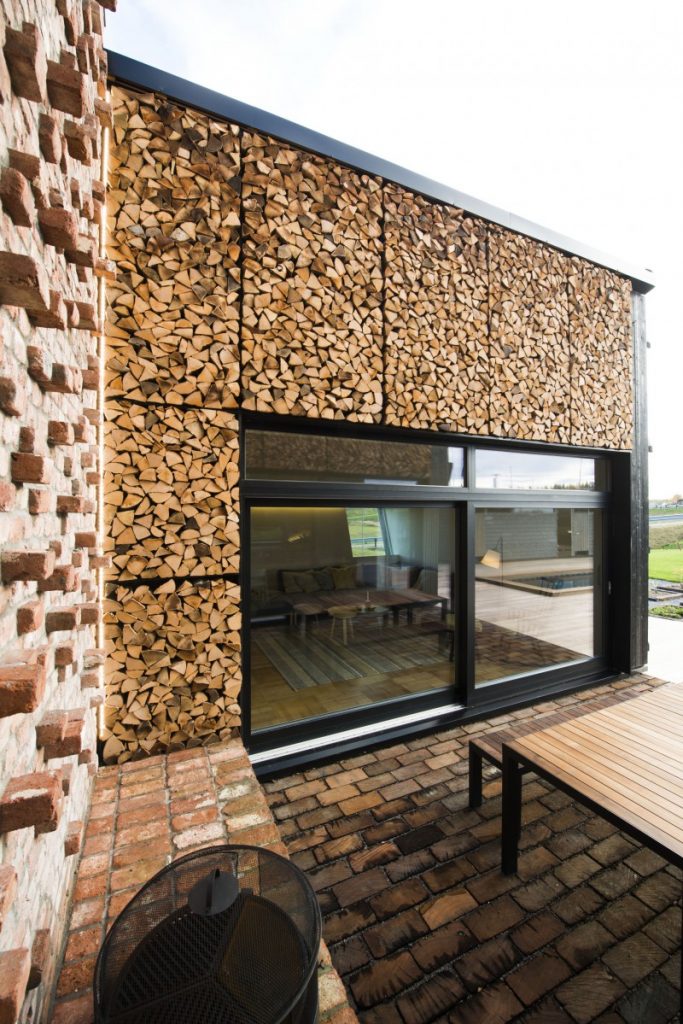
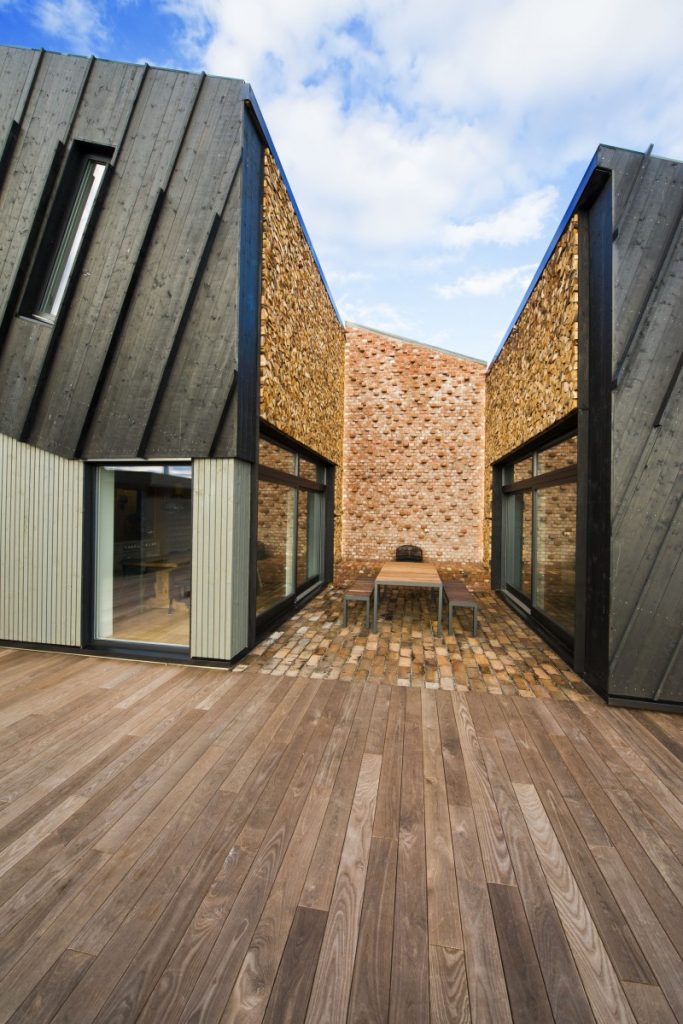
Reference:
https://snohetta.com/project/188-zeb-pilot-house